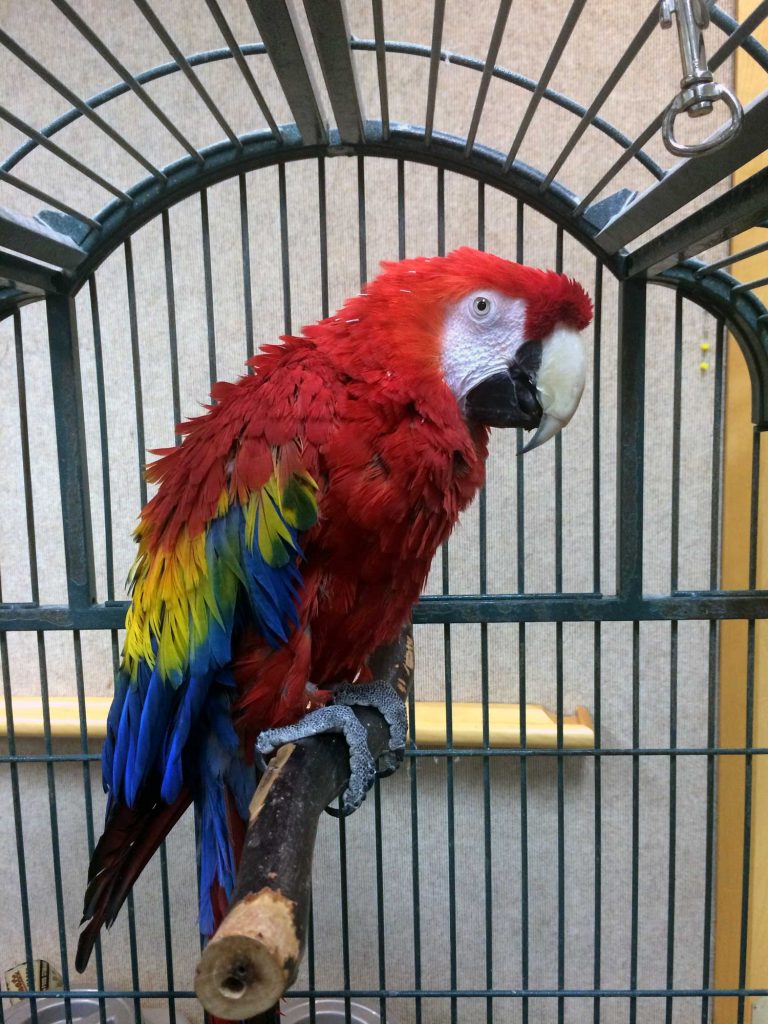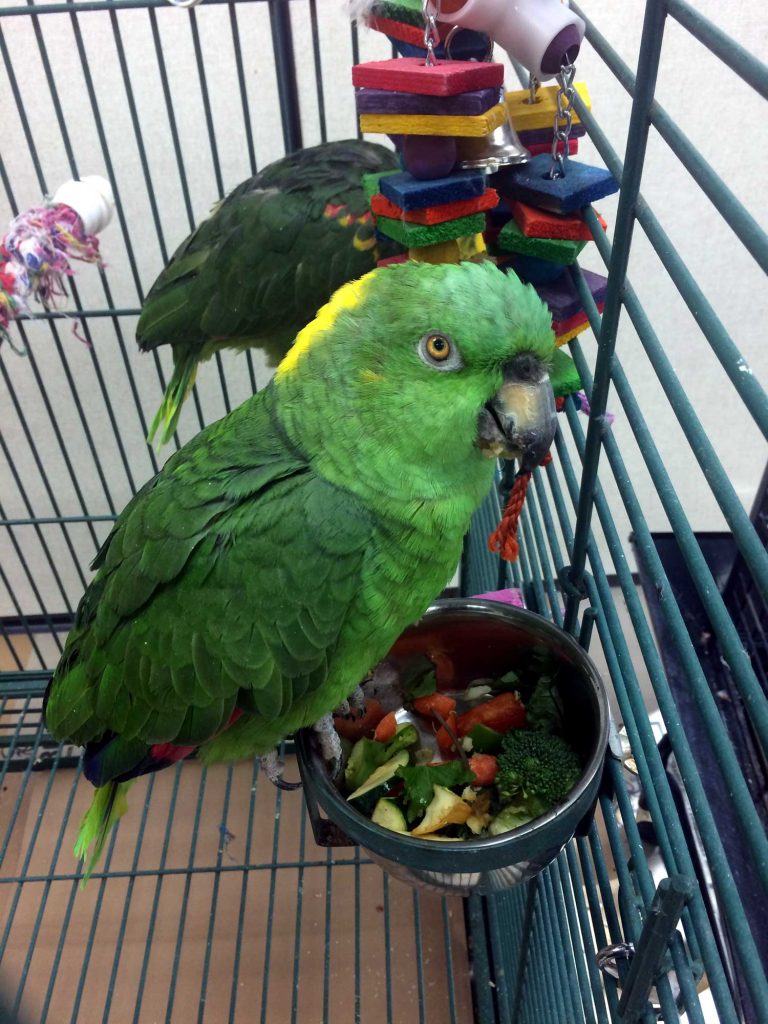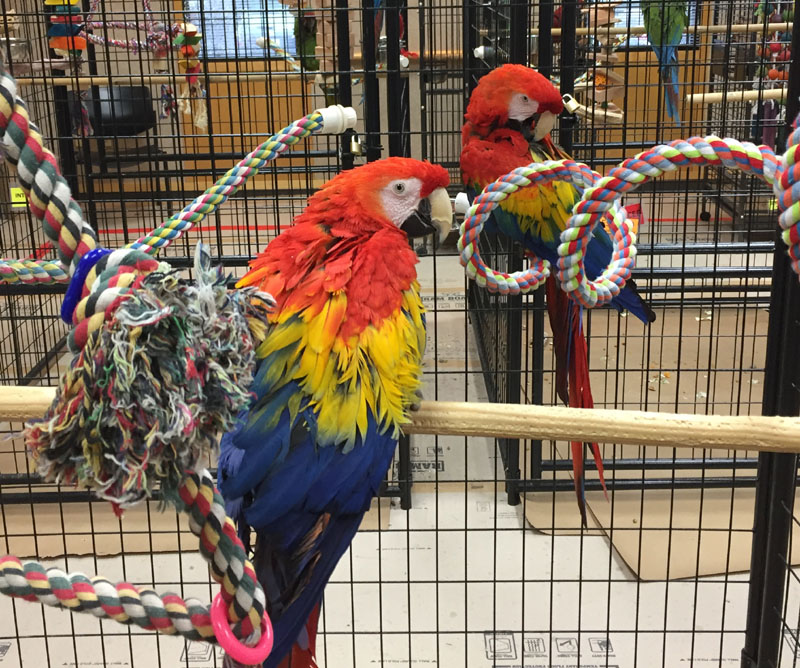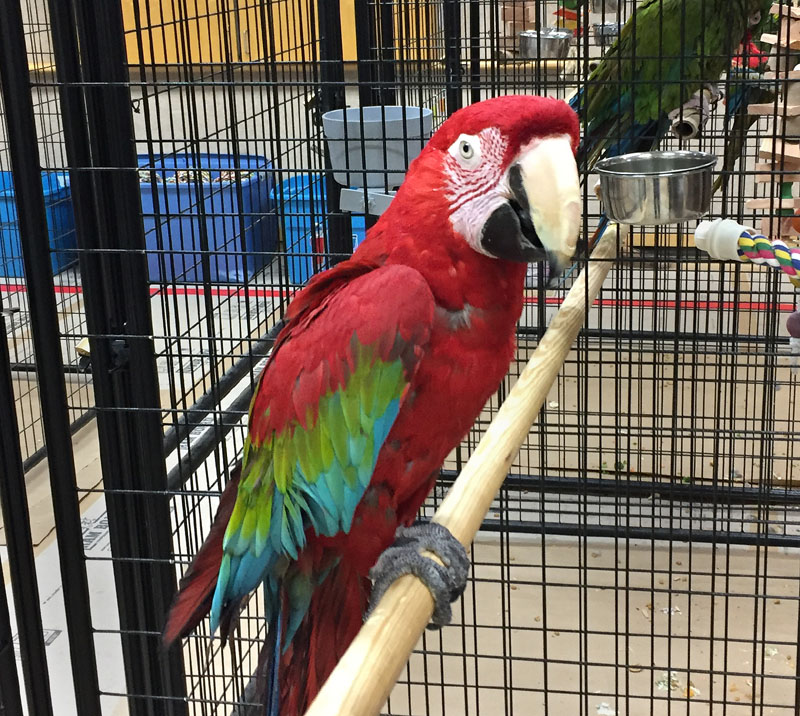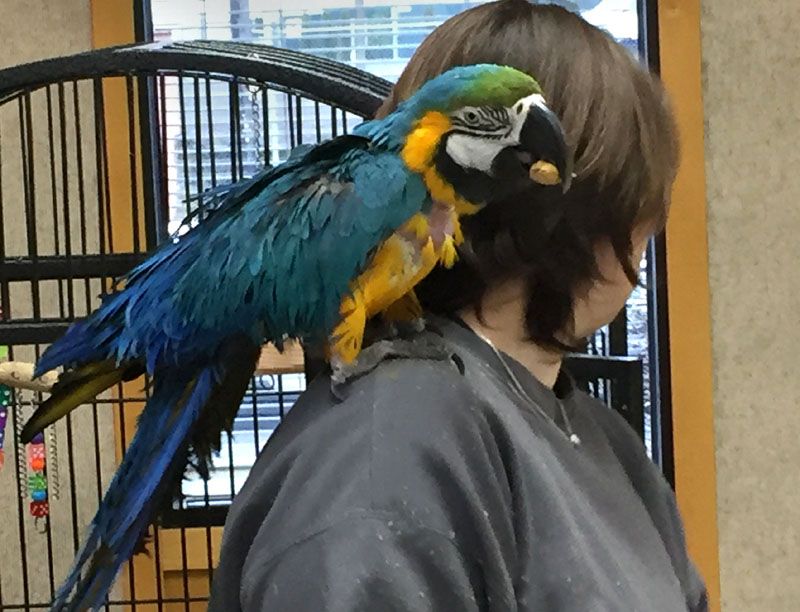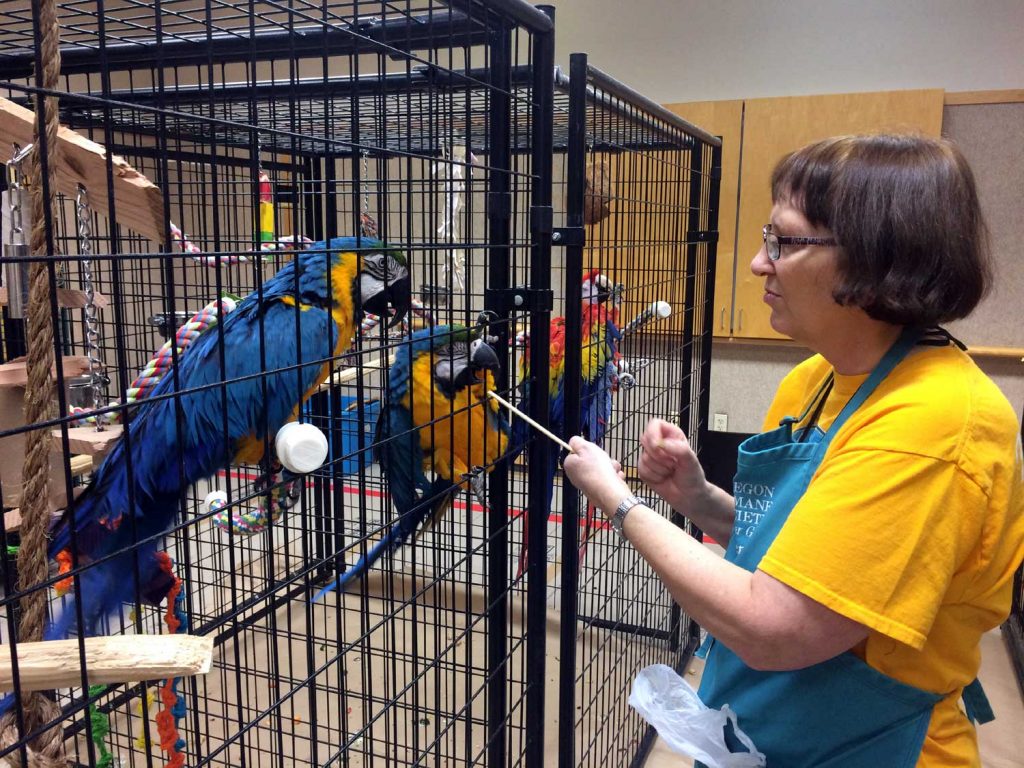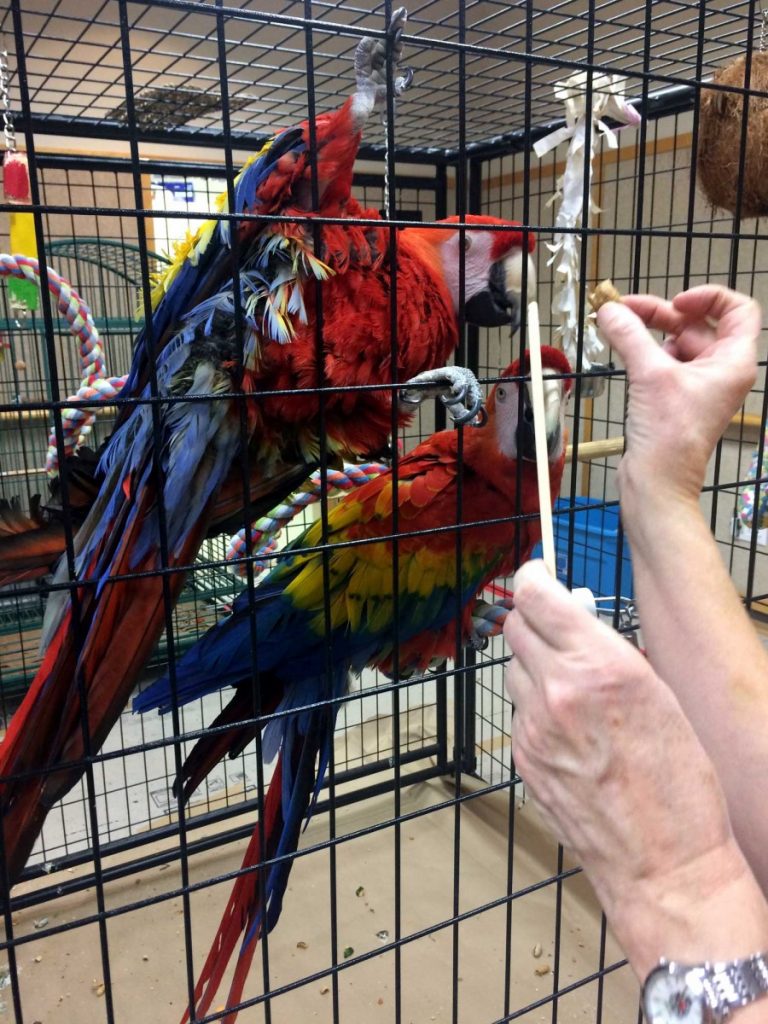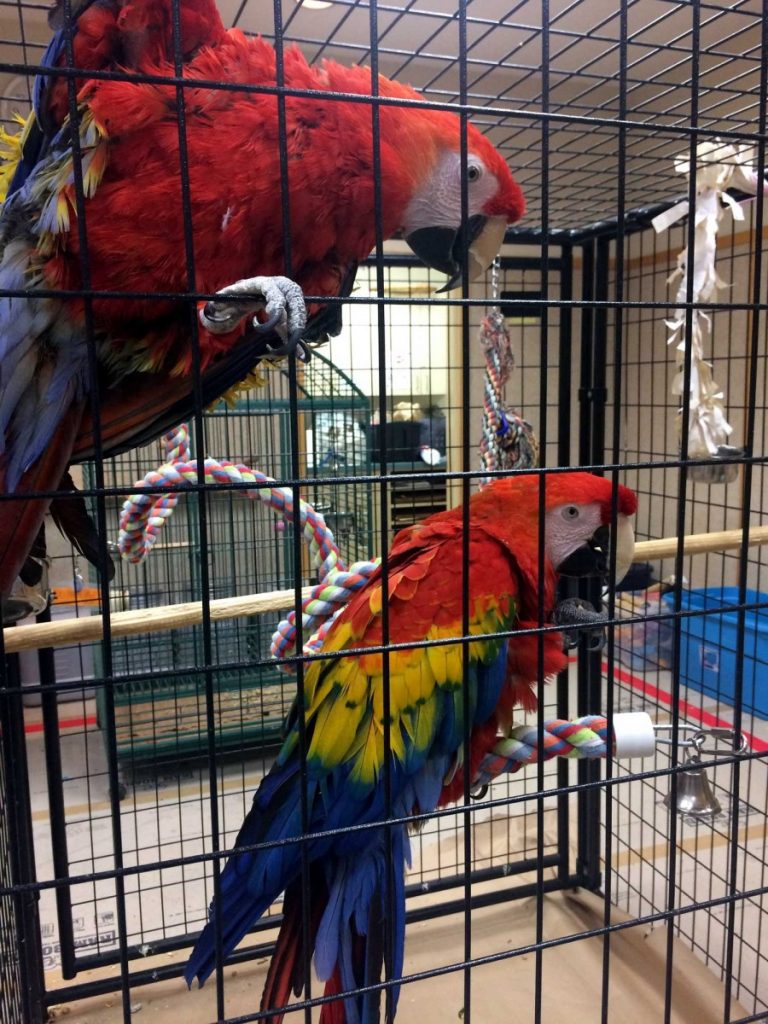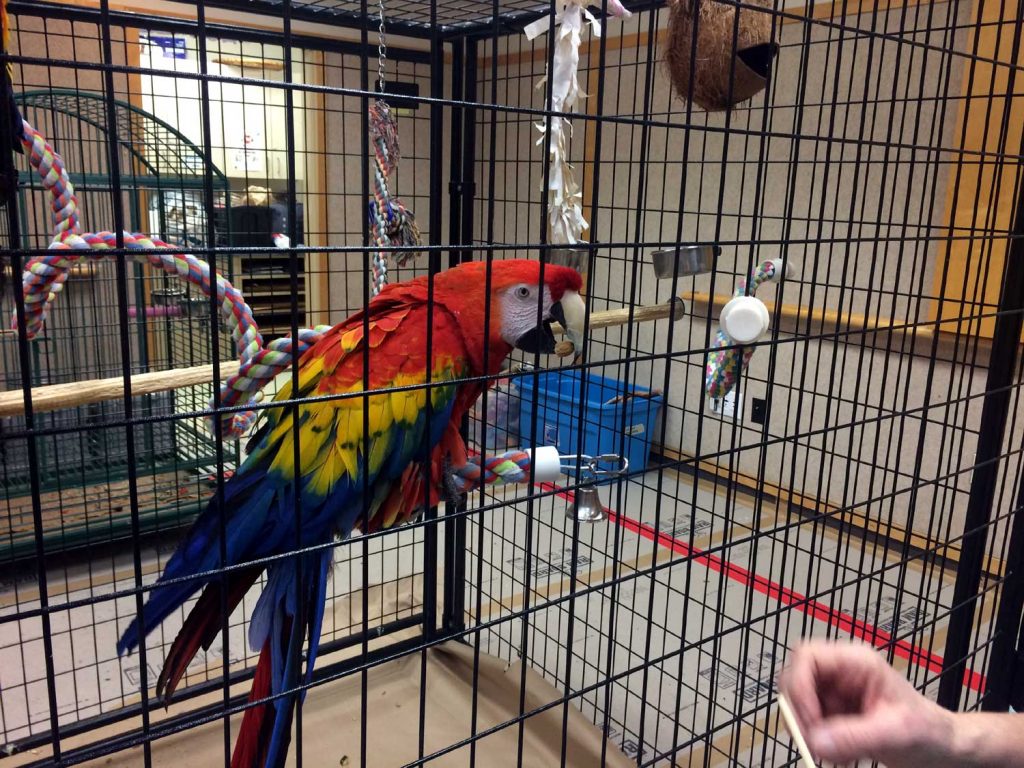Since July 2016, OHS staff and volunteers have been caring for 245 exotic birds seized from an individual who is now facing animal neglect charges (story here and here). Long-time volunteer René Pizzo’s blog highlights the unique challenges and rewards of caring for these exotic creatures. −Editor’s Note
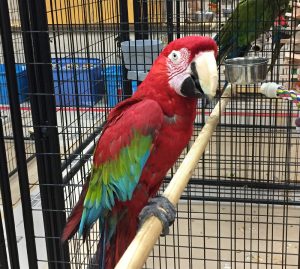
Adventures in Bird Town
As I cleaned a cockatoo cage one day, I was startled to feel something grab my shirt from behind. I looked around, and the cockatoo in the next cage had reached her clawed foot through the bars and grabbed onto my shirt. She still had her foot through the bars reaching towards me as she hung on the side of her cage, so I gently placed my finger in her grasp and sang the Beatles tune, “I wanna hold your ha-a-a-and, I wanna hold your hand.” I told her she needed a manicure, and later on, a volunteer experienced in nail and beak trims went through all the birds providing their spa treatment.
Another day, a couple of us were doing some cleaning when we were startled by a deep masculine voice saying, “Hello.” Since all of the volunteers and staff working at the time were women, I know I jumped when I heard this male voice. Turns out, it was one of the African Greys.
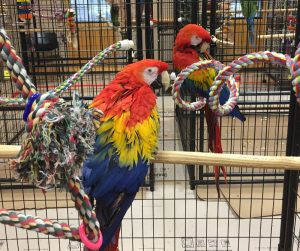
I was cleaning the macaw flight cages one hot day, and I felt a wave of dizziness when I stood up too quickly and exclaimed, “Whoo!” The birds are great mimics, and when they hear a phrase, sound, or whistle they like, whether it is from us humans or the other birds, they will joyously repeat it. One bird called out “Whoo!” in response to my exclamation, and then birds all around the main aviary started calling out “Whoo!”s. I guess that was a fun sound for them!
I am one of a number of OHS volunteers trained in Emergency Animal Sheltering (EAS). We have been assisting OHS staff in caring for 245 birds rescued from deplorable conditions earlier in 2016. A typical EAS volunteer shift lasts five to seven hours and consists of cleaning, feeding, socializing, and training these colorful creatures.
We have been working with all shapes, sizes, colors and species of birds in our emergency shelter. Sizes range from little finches to large macaws. Vocalizations—well, let’s just say we are required to wear earplugs inside the EAS building. The Small Bird Room is low-key with parakeets chirping and finches peeping, but the aviary where the majority of the large birds are housed can be a bit earth-shattering at times, as 200 birds clamor for attention.
The birds’ beaks can be a little intimidating, especially after watching a macaw easily break open a walnut. But our work with these birds is paying off as they learn to gently take treats or stay on a perch while their cage door is opened.
Training: Stick for Treat
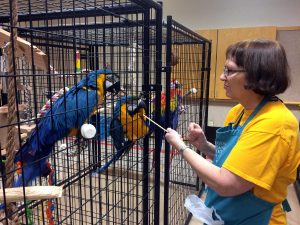
After about a month in the care of OHS, the birds’ health was already improving from their species-appropriate diets, fresh fruits and vegetables, daily cage cleaning, fresh water and daily baths or showers.
They have nice perches, and best of all, they have toys and foraging items to entertain them—thanks to everyone who donated items from our Wish List or joined our group volunteer sessions to make more toys. Some mornings when I came in to clean, I would tell the birds it looked like they had had a party in their cage—shredded colorful wooden toy parts and paper were scattered on the floor of their cages. Since the birds were feeling better, we could begin “target training” with them.
For target training, we begin by placing a wooden chopstick through the cage bars and saying “target.” When the bird touches the stick with his or her beak, we immediately say “Good bird!” and give him a treat. Peanuts are the biggest hit, but almonds, walnuts, grapes, banana slices, and sunflower seeds are also popular.
The birds quickly figured out that touching the chopstick meant they got a treat. After a week or so of doing this inside their enclosures, we moved on to encouraging some birds to come outside their cage to practice. We are able to lure them back into the cage with the chopstick and treat. They’re so smart!
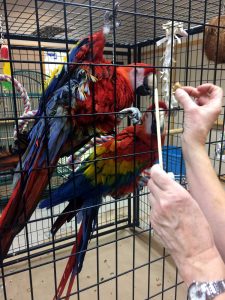
Whether a small green-cheeked conure or a huge scarlet macaw, the birds enjoy training. African Greys rush to the door when they see it’s training time, and they eagerly wait their turn as I move from cage to cage practicing with each bird. One of them beats me to the punch, touching the stick and calling out “Good bird!” before I can say it myself.
The smaller birds like cockatiels and conures are happy to work for sunflower seeds. If they see me working along the line of birds behind them, they are at the back of their enclosures hoping for their training “stick for treat.” When it’s their turn, there they are eager to show off that they know this game.
The drama queens of the bird world, the Quaker parakeets, grab anything I offer them and then toss it to the floor if it doesn’t meet their standards.
This training brought out some heartwarming surprises, too. I’ve worked with a sweet, elderly African Grey for four months and he had never vocalized in all that time. One day, as I opened his cage door to offer the training stick, it happened. A soft voice said, “Hello.”
I was so moved by this that of course I said, “Aww, sweetie. Here’s a treat for free.”
Now that the birds have been relinquished and can be adopted, my hope for all these wonderful and beautiful feathered jewels is loving homes, a continuation of the lives we gave them in nice, large environments with toys (thanks to all donors!), great food, veggie and fruit treats, daily cleaning, bird baths, fresh water, and lots of love, patience, and attention.
Photo Gallery
Many of the rescued birds have already been adopted, but there are still a number of macaws, conures and other species available now.
More Information
Felony Charges Sought (Oct. 2016) »
Birds to Go Up for Adoption (Nov. 2016 with updates – read more about how to adopt) »
Learn more about how volunteers become Emergency Animal Shelter-certified in this past blog post »
See all currently available birds and other small animals here »


